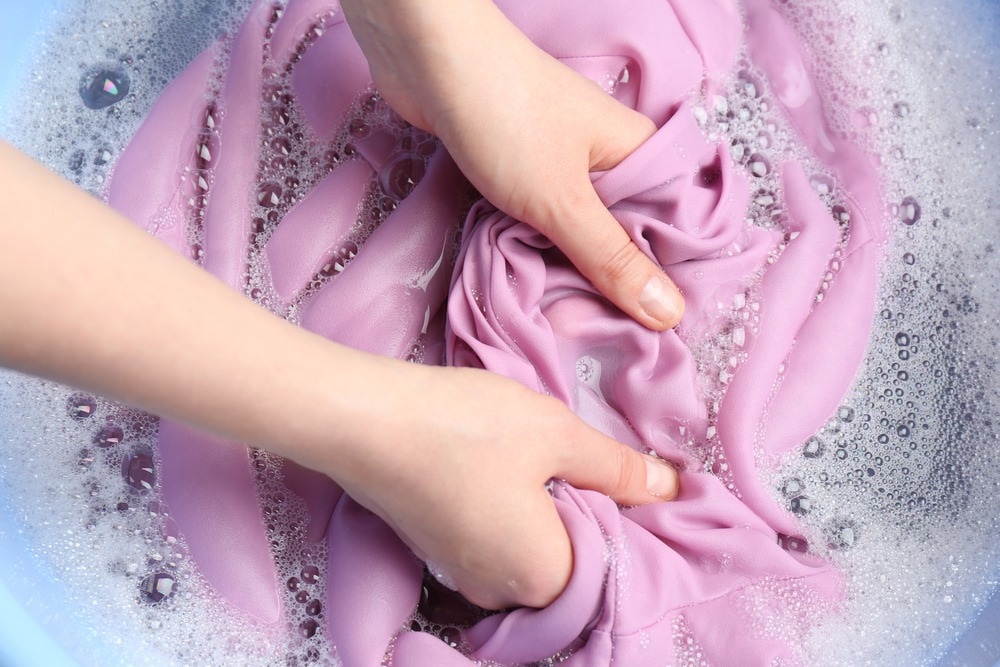Microplastics have been discovered in every component of the ocean food chain, from tiny plankton to enormous whales. Fibers lost during the laundering of synthetic fabrics are one of the main causes of this pollution.

Image Credit: New Africa/Shutterstock.com
Although several studies have demonstrated that microfibers are released during machine washing, it is less clear how hand washing affects this. In contrast to machine washing, researchers now report in ACS Environmental Science & Technology Water that hand washing can significantly reduce the number of fibers shed.
When plastic fibers, such as polyester and nylon, are used to make clothing, the fabric sheds tiny fibers that eventually find their way into wastewater and the environment. Even though researchers have looked into the quantity and kinds of microplastic fibers that are shed while washing clothes, most of their research has concentrated on washing machines.
However, manual laundry is still a common practice in many countries. The results of the hand-washing fabric have previously been reported, but the study was not exhaustive. To compare different hand-washing techniques to machine washing, Wang, Zhao, Xing, and colleagues wanted to systematically investigate microplastic fiber release from synthetic textiles.
The group used both hand washing techniques and a washing machine to clean two different types of fabric swatches made from 100% polyester and a 95% polyester-5% spandex blend. Researchers discovered that:
- Fewer fibers were released using manual techniques. For instance, the same 100% polyester fabric shed an average of 1,853 microplastic pieces when washed by hand as opposed to an average of 23,723 pieces when washed by machine.
- Machine laundering released more microplastics overall and by weight than the conventional method.
- The fibers released from hand washing tended to be longer.
- The number of released fibers with manual methods increased with the addition of detergent, pre-soaking the fabrics, and use of a washboard, but not as much as when using a machine.
- However, they discovered that the temperature, detergent type, wash time, and water usage had no appreciable impact on the number of microplastics shed during hand washing.
The findings, according to the researchers, can help identify the environmental sources of microplastic pollution and offer recommendations for “greener” washing techniques.
The Zhejiang Provincial Natural Science Foundation of China, the National Natural Science Foundation of China, and the Scientific Research Foundation of Hangzhou Dianzi University have all provided funding to the authors.
Journal Reference:
Wang, C., et al. (2022) Microplastic Fiber Release by Laundry: A Comparative Study of Hand-Washing and Machine-Washing. ACS Environmental Science & Technology Water. doi:10.1021/acsestwater.2c00462.